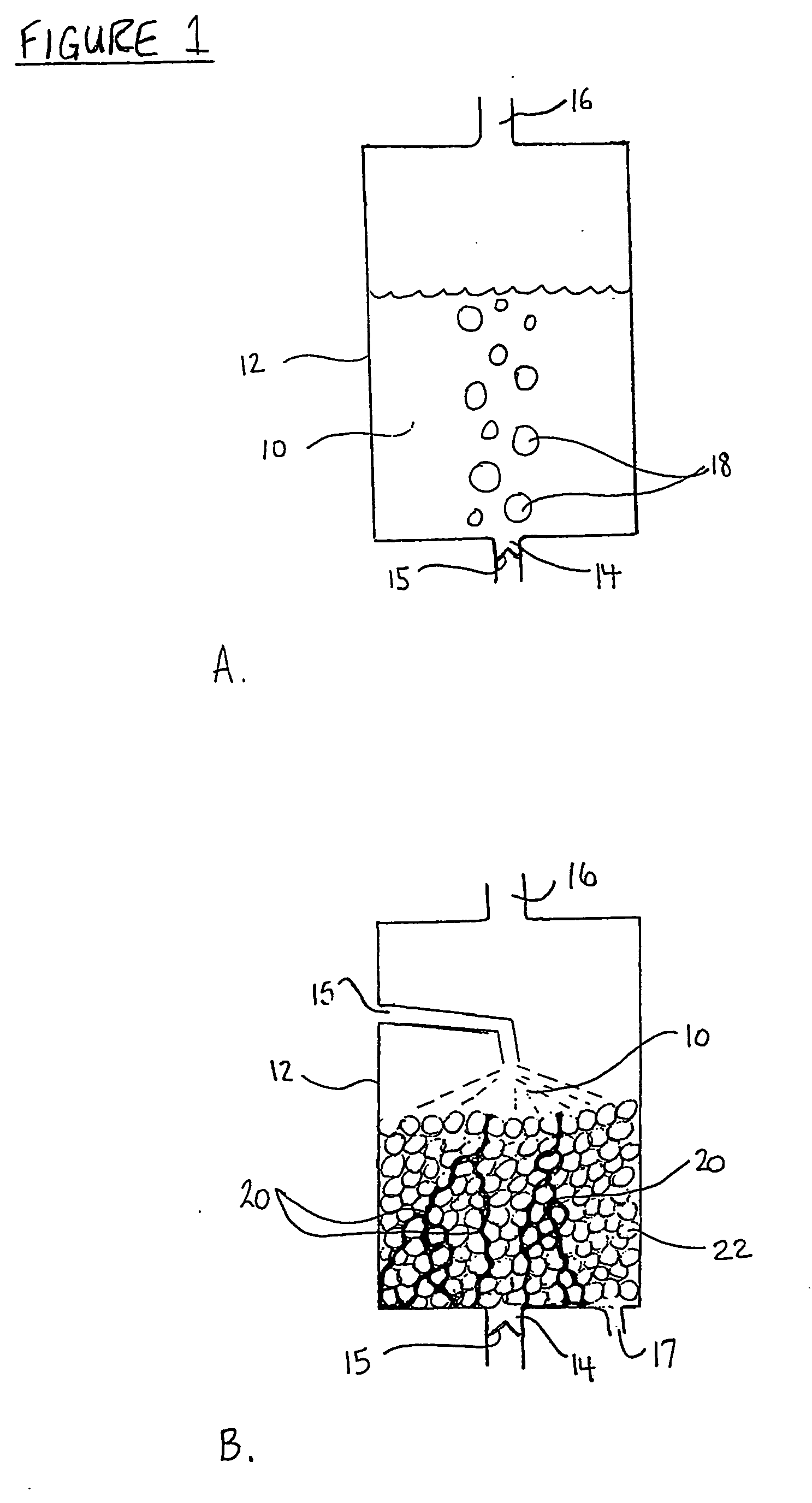Solution and method for scavenging sulphur compounds
a technology of sulphur compounds and sulphur dioxide, which is applied in the direction of absorption, inorganic chemistry, water/sludge/sewage treatment, etc., can solve the problems of significant threat to public safety and health, serous health risks, and toxic to humans and other animals
- Summary
- Abstract
- Description
- Claims
- Application Information
AI Technical Summary
Benefits of technology
Problems solved by technology
Method used
Image
Examples
example # 1
Example #1
[0109] A mixture of 10% Stabitrol™ and 90% water has a freezing point of around 0° C. and a pH of below one. Amine alone has a freezing point of around 0° C. and a pH of between 12-13. The inventors have shown that when 5% Stabitrol™, 45% water and 50% amine are mixed, the solution heats up to about 120° F. during the mixing process, and the freezing point of the final solution is below −51° C. and has a pH of between 10-11. Normally when these chemicals are used independently of one another in cold weather an anti-freeze agent would have to be added. This new mixture eliminates the need for an anti-freeze agent, when using this solution in cold weather.
[0110] The percentage of each chemical in this mixture can be varied a great deal, and the resultant mixture will still remain stable, meaning that the metal ion will remain in solution. The percentage of any particular chemical will be based on the application for the mixture, and the pH at which it is required to be effe...
example 2
[0114] A series of initial field trials using a mixture of Stabitrolu, water and copper to remove H2S from gas, were performed. The results of these initial. tests were poor, and the inventors believed this to be because the pH was too low, as the pH of this mixture was about one. The inventors hypothesized that the pH of the mixture needed to be at 8 to 10, as the H2S is much more soluble in a high pH, and therefore there is a much longer contact time between the copper and the H2S.
[0115] As the mixture being used for H2S scavenging should preferably be a liquid in a colder environment, the inventors added an anti-freeze to the Stabitrol™, water and copper mixture, as at the time, they believed the mixture would freeze at around 0° C. When an anti-freeze was added, the results were a little better. However, the inventors found that it was not the anti-freeze that was causing the better results, but rather it was the 2% amine used in the anti-freeze as a corrosion inhibitor, that w...
example 3
[0123] Each test was conducted in a test vessel that had a test tower which was four-inches in diameter and 10 feet tall, and included a sparger bar ¾-inches in diameter and about 4 inches long with eight holes, {fraction (3 / 32)} inches in diameter, drilled at a 45 degree angle alternately to each side of center. A flow meter was used to measure gas flow and there was a flow line to the flare stack. The gas used in these tests was sour gas. Pressure, temperature, and the H2S content of the gas varied between tests.
[0124] The concentration of the H2S in the gas used varied because several different oil and gas wells were fed into the test complex. If the operator had problems and shut in some wells, the amount of H2S in the sample would change, as H2S content differed from well to well.
[0125] When there was pressure on the tower, actual flow rates were considerably higher because the gas was compressed. There are set differentials for pressure. The earlier of these tests did not re...
PUM
| Property | Measurement | Unit |
|---|---|---|
| Temperature | aaaaa | aaaaa |
| Temperature | aaaaa | aaaaa |
| Temperature | aaaaa | aaaaa |
Abstract
Description
Claims
Application Information
 Login to View More
Login to View More - R&D
- Intellectual Property
- Life Sciences
- Materials
- Tech Scout
- Unparalleled Data Quality
- Higher Quality Content
- 60% Fewer Hallucinations
Browse by: Latest US Patents, China's latest patents, Technical Efficacy Thesaurus, Application Domain, Technology Topic, Popular Technical Reports.
© 2025 PatSnap. All rights reserved.Legal|Privacy policy|Modern Slavery Act Transparency Statement|Sitemap|About US| Contact US: help@patsnap.com


